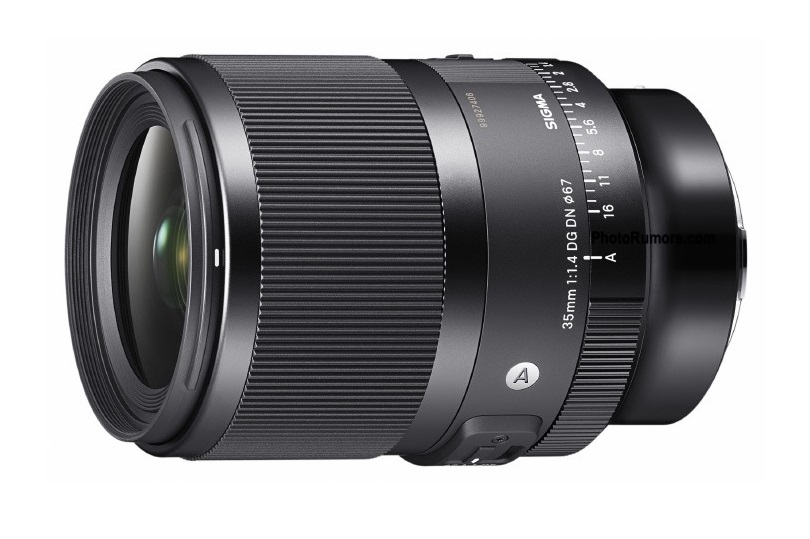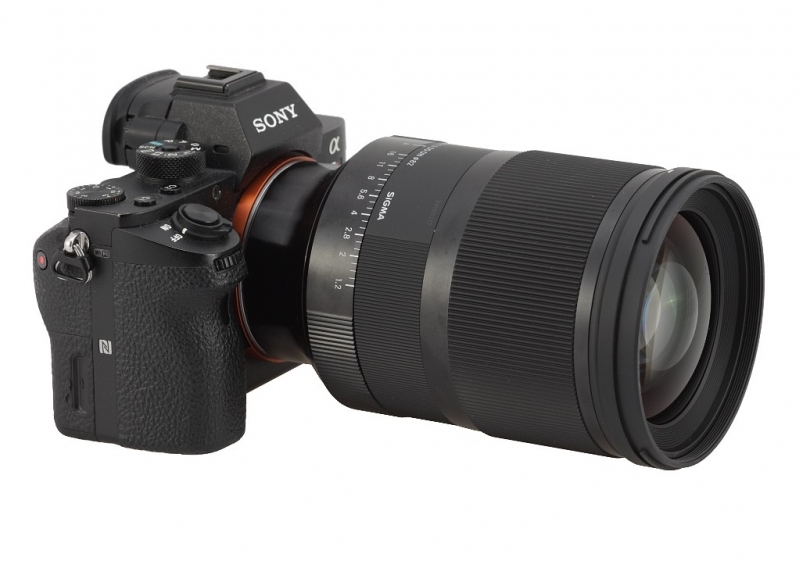
Hands-on with new Sigma 35mm F1. 4 DG DN 'Art' Almost a decade after Sigma inaugurated its 'Global Vision' line of lenses with the original 35mm F1. 4 'Art', the company has released an all-new 35mm, built from the ground up for modern mirrorless ILCs.
The Sigma 35mm F1. 4 DG DN 'Art' is a new design, offering several refinements over its predecessor, and is available now in two versions: Sony E-mount and Panasonic/Leica/Sigma's L-mount.
We've been shooting with an L-mount version for a few days, and you'll find a full gallery of samples here. In the meantime, click through this article for a closer look at Sigma's latest prime.
Hands-on with new Sigma 35mm F1. 4 DG DN 'Art'
Physically, the Sigma 35mm F1. 4 DG DN 'Art' is similar to other recent Sigma prime lenses, and quite different to the original 35mm 'A'. Both smaller and lighter (645g / 22. 8oz compared to 665g / 23. 5oz) than its predecessor, the new DG DN 'A' also offers some meaningful ergonomic improvements.
Hands-on with new Sigma 35mm F1. 4 DG DN 'Art'
The most obvious physical difference is an aperture dial, which can be locked at 'A', if required, for automatic or camera-driven control. In a thoughtful touch, the dial can also be locked out of A, meaning that if you prefer lens-driven control over aperture, you can just lock the dial into this mode and never have to worry about accidentally moving the dial too far past F16, back into automatic control. The dial can also be 'de-clicked' for smooth, stepless aperture control. Most stills photographers won't care, but this is the kind of feature that makes videographers happy.
The aperture diaphragm itself has 11 blades, and while this doesn't guarantee pleasant bokeh, it does ensure that out of focus highlights remain circular rather than polygonal as you stop the lens down past its widest setting. And, all else equal, maintaining a circular circle of confusion generally yields more pleasing bokeh.
Hands-on with new Sigma 35mm F1. 4 DG DN 'Art'
Another video-friendly feature is a very quiet stepping motor to drive autofocus - a common feature of many built-for-mirrorless lenses. It's worth noting that stepper motors in general aren't as fast as the linear motors we're more commonly seeing from mirrorless manufacturers, and this lens is no exception. And while it's not the fastest-to-focus lens of its type, speeds are reasonable thanks to the lens having to move only one element to adjust focus.
Direct manual focus is available at all times, by rotating the large, nicely-damped focus ring. Minimum focus is a respectable 30 cm (11. 8"), which works out to a maximum magnification ratio of 1:5. 4 (0. 19x).
Hands-on with new Sigma 35mm F1. 4 DG DN 'Art'
Also present on the lens barrel is the expected focus mode switch, and a customizable AF-L button, which can be set to various functions depending on the model of camera. Like other lenses in the 'Global Vision' line, the L-mount version of the new Sigma 35mm F1. 4 DG DN 'Art' is compatible with Sigma's USB DOCK UD-11 for feature customization and firmware updates.
Being a Global Vision lens, every single sample of the new DG DN 'A' is checked before shipping, using Sigma's proprietary MTF measuring system, known as 'A1'.
Hands-on with new Sigma 35mm F1. 4 DG DN 'Art'
Optically, the Sigma 35mm F1. 4 DG DN 'Art' comprises 15 elements in 11 groups, including one FLD, one ELD, two SLD (all of which are various flavors of 'low dispersion' glass aimed at reducing chromatic aberrations) and two aspherical elements. Sigma claims that this design delivers excellent sharpness across the frame, very little coma, and good control over longitudinal chromatic aberration (LoCA) which is hard to correct via software. Sigma's 'Super Multi-Layer Coating' should help keep contrast high and prevent flare and ghosting in difficult lighting conditions.
Hands-on with new Sigma 35mm F1. 4 DG DN 'Art'
Depending on the mount, the new lens is also compatible with in-camera optical corrections, although how (and where) you'll see the benefit of these is a little complicated (it's somewhat simpler if you're an L-mount shooter). This issue notwithstanding, the only correction which we'd recommend you enable, if you can, is distortion (Adobe Camera Raw and Capture One easily allow you to, whether you've shot on E- or L-mount).
This lens does deliver rather more distortion than we'd expect from a medium-wide prime, but the built-in profile straightens things up with only a minimal impact on corner sharpness.
Hands-on with new Sigma 35mm F1. 4 DG DN 'Art'
The New DG DN 'Art' differs from its original progenitor in another important way - this new lens is sealed against dust and moisture. Perhaps less important, but still welcome, is an upgraded petal-style lens hood, which features a partly rubberized barrel and a more secure button-lock bayonet attachment. The front filter ring diameter is 67mm - the same as the original 35mm F1. 4 'A'.
The new Sigma 35mm F1. 4 DG DN 'Art' will be available in mid-May for $899.
. dpreview.com2021-4-28 15:30



